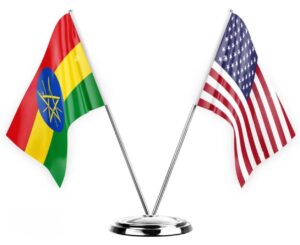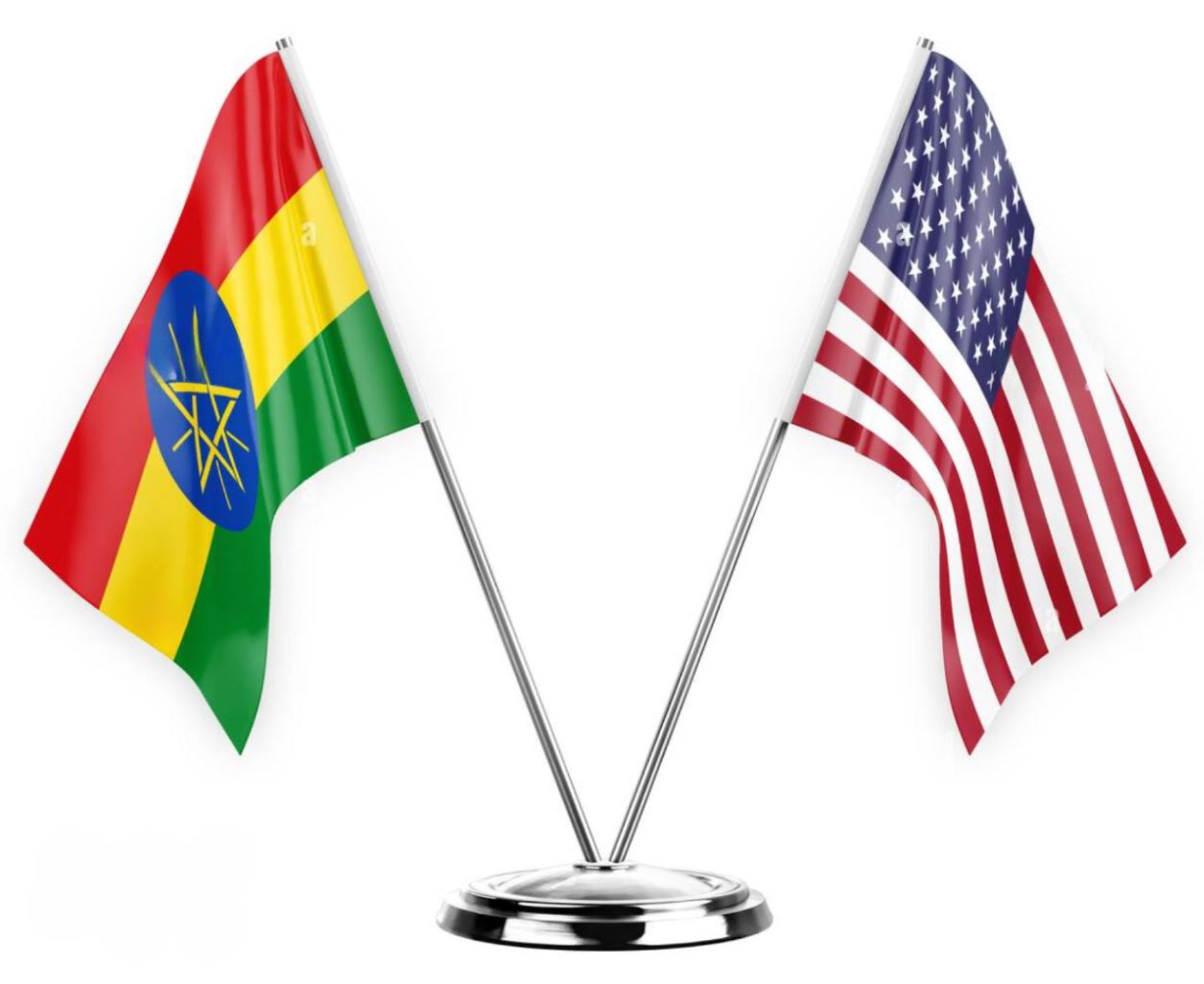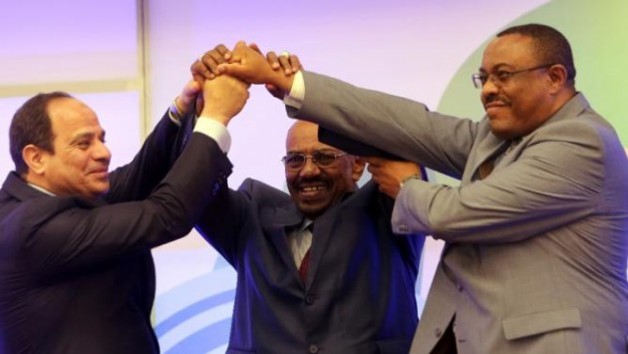Reflections on Forging a “Refashioned” US-Ethiopia Partnership
 US Secretary of State Antony Blinken visited Ethiopia on March 15, 2023.
US Secretary of State Antony Blinken visited Ethiopia on March 15, 2023.
His mission was to refashion, reinvigorate and reinvent the strong partnership between the US and Ethiopia that had been flagging over the past two years.
Unlike Caesar, Blinken came, saw and laid the foundations for “refashioning” US-Ethiopia partnership.
Following his tour of UN Logistics Center Warehouse on March 15, Sec. Blinken used the word partnership at least 7 times in describing US Ethiopia relations.
He talked about “exchanging views on resuming and strengthening our longstanding partnership in trade, investment and full-fledge development assistance.
He recalled the “enduring partnership during periods of famine, conflict, displacement.”
He underscored the “day-in, day-out commitment to this partnership with Ethiopia.”
He appreciated the “strong partnership with the government” in providing emergency support.
He affirmed America’s desire to “further enhance our strategic partnerships” dating back to over a century,” and highlighted the fact that “over the past several decades we have made considerable progress in elevating that partnership.”
He emphasized how US-Ethiopia “partnership is very strategic and important for our two-way mutually beneficial relationship, and also for the regional stability.”
He expressed optimism “exchanging views on resuming and strengthening our longstanding partnership in trade, investment, full-fledge development assistance” will bear fruit.
In advance of Sec. Blinken’s visit, Molly Phee, Assistant Secretary for African Affairs amplified on the partnership motif:
What we’re looking to do is refashion our engagement with Ethiopia. We would like to be able to have a partnership that is commensurate with their size and influence and with our interest and commitment to Africa.
Talk of Ethiopia-US partnership is music to my ears as an Ethiopian-born American.
Truth be told, I was indifferent and dismissive of Sec. Blinken’s first Ethiopia visit.
Frankly, I thought he had showed up a day late and a dollar short.
I expected his visit to be long on photo ops and short on substance.
I surmised Sec. Blinken would grab the media stage, take full credit for the peace agreement in Ethiopia’s northern war, make vague pledges about continuing aid and skedaddle outta town.
As my numerous weekly commentaries over the past two years testify, I have been pessimistic and cynical about meaningful improvements in relations between the US and Ethiopia, certainly not under the Biden administration.
After the trials and tribulations in Ethiopia-US relations over the past two years, I was convinced relations between the two countries have been permanently and irredeemably damaged.
Much to my surprise and delight, US-Ethiopia relations began to show discernible improvements after the US-Africa Summit held in mid-December 2022.
After the Summit, the social/media war of words, accusations and recriminations, finger wagging and finger pointing, bellyaching and faultfinding were conspicuously absent.
Many positive signs in the bilateral relations of the two countries were becoming evident.
I was most impressed by US approval (certainly lack of opposition) of the World Bank’s grant of $745 million in mid-December 2022 for health systems and flood management projects. The total WB commitment to Ethiopia over FY22-FY23 is $2.9 billion.
As the leading force and largest shareholder of the World Bank, the US retains veto power over Bank’s decisions.
Ethiopia snagged the $745M World Bank grant because the US minimally did not oppose it!
Arguably, as the most vociferous, defiant and relentless critic of US foreign policy in Ethiopia over the past two years, it was hard for me to wrap my head around the prospect of improved relations between the US and Ethiopia. I could not believe relations were were thawing out from a deep freeze and that I am witnessing the apparent onset of détente between the two countries.
Many thoughts passed through my mind.
I felt the manifestly improving picture of bilateral relations was phantasmagoric, a figment of my imagination.
I convinced myself it was all make-believe and that the US was engaged in some sort of sophisticated strategic gamesmanship to outplay Ethiopia.
But what type of Trojan Horse is the US sneaking into Ethiopia?
After two years of diplomatic war, I could not believe the US would seek improved relations with Ethiopia act in good faith and good will.
I was determined to uncover the scam.
In an attempt to discover the “real game” the US was playing on Ethiopia, I ran a few thought experiments factoring hypothetical variables related to geopolitical competition for influence in the Horn, “containment” of competitive influences in the Horn and Middle East regions, and other economic, ideological and military considerations.
I could not come up with satisfactory answers. I had to follow Occam’s razor which states that the simplest explanation is preferable to one that is more complex.
I asked myself many questions:
What could the US gain by continuing to antagonize Ethiopia in the Horn with potential rippling effects throughout the broader Middle Eastern geopolitical context?
How could a destabilized Ethiopia- the anchor in the Horn of Africa- serve US national interests however defined?
How could the US possibly benefit from Ethiopia’s reorientation in alliances in the contemporary international power structure?
How different and similar are the strategic goals of the two countries in the Horn and throughout Africa? For instance, could either country benefit from the spread of terrorist strongholds in the region?
What issues exist between the US and Ethiopia than cannot be resolved through cooperation through dialogue and negotiation?
I even set up Venn diagrams to visualize the factual, historical, diplomatic and political relationship between the two countries in an attempt to figure out the exact type of Trojan Horse the US was using to hoodwink and deliver the coup de grace on Ethiopia.
I even tried to resurrect faded memories of game theory models from graduate school decades ago (and had occasionally used to explain the negotiating strategy of the TPLF) to decipher the “touchdown play” against Ethiopia conceived in the US playbook.
I was stumped.
If the US is running some sophisticated sinister game of diplomatic deception, duplicity and treachery on Ethiopia, I could not figure it out.
I guess I just do not have the requisite intellectual candlepower to penetrate the US “game plan,” if there is one.
In the end, I accepted Prof. Stephen Walt’s (Harvard Kennedy School) analysis in his book, “The Hell of Good Intentions, America’s Foreign Policy Elite and the Decline of U.S. Primacy.
Walt argues, “both Democrats and Republicans have been misguided in their pursuit of liberal hegemony” by “a very powerful bipartisan consensus within the foreign policy elite.”
The members of this “foreign policy elite blob” include not only formal institutions of government but also
think tanks, various special interest groups and lobbies that try to advance some foreign policy cause, people in the media who write on a regular basis on foreign affairs and others who write books and articles that shape opinion and train the people who go into key foreign policy positions.
For the past two years, the “foreign policy blob” was allowed to run US foreign policy in Ethiopia.
They pumped the Biden administration the Ethiopian government is a pushover and will topple with minimal pressure.
The “foreign policy blob” underestimated the resolve of the Ethiopian people and the determination and strategic intelligence of the Ethiopian leadership.
In the end, the foreign policy blob achieved nothing other than increased polarization between the two countries and succeeded in driving Ethiopia to seek friends elsewhere.
I concluded that after the December 2022 US-Africa Summit, the US indeed had decided on a new approach to American foreign policy based on realism and restraint.
I could be entirely wrong in my conclusions and analysis, but I must draw conclusions from available facts.
The alternative is to keep myself trapped in complex hypercritical narratives and blind myself to the obvious and perceptible changes in US policy.
Of course, if I am wrong in my conclusions about the trajectory in US-Ethiopia relations/partnership, that would only prove on thing: “There is no fool like an old fool.”
Partnership- The devil is in the details
It is erroneously attributed to Henry Kissinger that, “Nations do not have permanent friends and permanent enemies. Only permanent interests.”
It is true that, “A friend in need is a friend indeed.”
But nations do not make friendships. They make partnerships.
Nations preserve their national interests through partnerships, not through friendships.
Secretary Blinken during his Press Statement in Addis Ababa said US Africa policy is
committed to deep, responsive, and genuine partnerships on the continent, because we believe we can only solve shared challenges – and deliver on the fundamental aspirations of our people – if we work together.
He mentioned “partnership” 11 times in his Statement.
Is “partnership” the new mediaspeak/newspeak/policyspeak?
Has it become one of those platitudinous expressions whose meaning is lost through overuse and repetition.
Does the word “partnership” have any substantive meaning in US foreign policy?
On March 23, 2023, President Joe Biden said,
The United States has no closer friend, partner, or ally than Canada. Over the past 150 years, our two countries have built one of the closest and most extensive relationships.
I am impressed by President Biden’s historical observation because the US and Ethiopia have also built a relationship and partnership going back to 1903.
That makes it a 120-year-old close friendship and partnership!
Ethiopia and the US have had the closest and most extensive relationships in all of Africa.
On March 14, 2023, State Department spokesperson said:
The United States and Ethiopia share a long-standing and important partnership based on mutual interests in promoting peace, stability, and economic development. The United States has maintained diplomatic relations with Ethiopia since 1903.
Secretary Blinken acknowledged the 120-year-old US-Ethiopia partnership during his visit several times.
The history of US-Ethiopia partnership is quite interesting.
It came less than two decades after the Berlin Conference and the Scramble for Africa, and seven years after Ethiopia’s decisive victory over the invading Italian colonial army.
When Robert Skinner came to Ethiopia in 1903 to sign the Treaty of Commerce, Ethiopia was the last country standing on the African continent undefeated by European colonialism.
The dream of creating a strategic partnership based on trade and commerce remains is yet to be fulfilled.
Indeed, considering the expulsion of Ethiopia from the AGOA regime, it seems the original foundation of a trade partnership remains an unfulfilled Skinnerian dream.
“Partnership” is a loaded concept with common and technical meaning.
Partnerships are quite common among lawyers, physicians and business entrepreneurs.
What type of “refashioned partnership” between US and Ethiopia does Sec. Blinken have in mind?
In July 2008, President Barack Obama defined “partnership” in the domestic US context:
For our purposes, a partnership is a collaborative working relationship between the US government and non-government partners, or among US government entities, in which the goals, structure, and governance of the partnership, as well as the roles and responsibilities of each partner are mutually determined.
Sec. Blinken declared the US is aiming for a “strategic partnership” with Ethiopia.
While there is no generally accepted definition of “strategic partnership,” scholars suggest it is an arrangement in the relations between nations that came into being after the end of the Cold War
in a period characterized by intensifying economic, technological and people-to-people exchanges. The growing impact of globalization underlined the importance of upholding the international rules and principles that regulate the access of states to international regimes and organizations.
Strategic partnerships are said to create “privileged bilateral relationships” that are
grounded in close contractual relations such as association agreements or free trade agreements, where the diplomatic dimension functions as additional political consultation and reinforcement of friendships between states.
China is known for its vast network of strategic partnerships in the Belt and Road Initiative (BRI) to advance its commercial, strategic and political interests and influence. China’s strategic partnerships continue to evolve and expand.
Imagining a “refashioned” US-Ethiopia strategic partnership
In June 2021, President Biden and G-7 leaders launched the Build Back Better World (B3W) Partnership “to work with partners that share our democratic values to finance and develop infrastructure in a manner that is transparent, sustainable, adheres to high standards, and catalyzes the private sector where possible.”
It is manifestly a response to China’s Belt and Road Initiative aimed at addressing infrastructure development needs of low- and middle-income countries.
The mechanics of B3W is to “coordinate and mobilize private-sector and multilateral capital to support projects in climate, health and health security, digital technology, and gender equity and equality.”
In this regard, private and public-private Chinese capital is miles ahead of the US and the G-7 countries in Africa.
China is Africa’s largest two-way trading partner, hitting $254 billion in 2021, a four-fold increase over U.S.-Africa trade.
Chinese investments represent the largest proportion (more than double US investments) of foreign direct investment in Africa providing employment for hundreds of thousands.
China lends more to African countries than any other country.
The Chinese Loans to Africa Database shows Chinese financiers signed 1,188 loan commitments worth $160 billion with African governments and their state-owned enterprises between 2000 and 2020 principally in transportation, power generation, mining and telecommunications.
China seems to be playing a long game in Africa and is making significant inroads.
It is unlikely B3W will be able to match BRI dollar for dollar or project for project in the foreseeable future.
The sensible thing to do for the US in the short-term is to focus on alternatives that can enable the US to get not only in the game but also gain the good will and win hearts and minds of Africa’s youth.
More specifically, how should B3B apply in the future US-Ethiopia strategic partnership?
I have previously written about a New Pax (Peace)/Pact Americana.
I agree with the proposition that US-Ethiopia relations is founded on a strong foundation.
But that 120-year-old foundation has been allowed to decay and crumble.
When Robert Skinner toiled for trade relations between the US and Ethiopia, he had a vision of a strong partnership based on trade and commerce.
Skinner foresaw flourishing American investments in Ethiopia and increasing exports to the US.
Skinner championed the importance of Ethiopia as a US trading partner in Africa and was optimistic about long-term investment possibilities.
He even argued US trade relations with Ethiopia could preserve Ethiopia’s independence and prevent another colonial attempt.
Skinner creatively proclaimed, “commerce has created itself in [Ethiopia] in spite of American indifference to the desirability of having direct contact with consuming markets and is susceptible of being increased.”
Former US Ambassador to Ethiopia David Shin in his “Introduction” to Skinner’s “The 1903 Skinner Mission to Ethiopia, A Century of American Ethiopian Relations (2003)” explains the “idea of US trade with Ethiopia dates back to 1846 when the head of American foreign policy agency urge the chairman of the US house committee on foreign affairs to sign trade treaties with various countries including Ethiopia.”
Skinner was in France on assignment and he monitored Ethiopia’s trade flow and noticed an uptick. He contacted the State department in 1900 urging dispatch of an American mission to negotiate a commercial treaty with Emperor Menelik II of Ethiopia. President Teddy Roosevelt eventually commissioned Skinner to negotiate the treaty.
Shinn cites data indicating that between 1899 and 1900 Ethiopia imported One million Maria Theresa dollar worth of American cotton.
In 1902, the US purchased more than $800,000 worth of coffee from Ethiopia and total exports from Ethiopia in 1903 amounted to $2.3 million.
In 2020, United States exported $554M worth of goods and services to Ethiopia.
In 2020, Ethiopia exported $409M to United States.
It is a crying shame that 120-year-old partnership which started with treaty of commerce could barely produce one-half billion dollars in economic transactions between the two countries.
After 150 years of partnership, U.S. goods and services trade with Canada totaled an estimated $718.4 billion in 2019. U.S. goods imports from Canada totaled $319.4 billion in 2019.
In my view, if it ain’t broke don’t fix it.
The trade and investment partnership started by Skinner was spot on 120 years ago.
A strong partnership between the US and Ethiopia based on trade and investment is spot on today 120 years later.
It is said, “Those that fail to learn from history are doomed to repeat it.”
Obviously, every single historical moment is unique to its time and place and cannot be repeated.
The adage is intended to counsel against making the same mistakes time and again and to learn from those mistakes.
In 2023, the US and Ethiopia have an opportunity to learn from the mistakes of the past 2 years, indeed 120 years.
They now have an opportunity to do it right by establishing a strong partnership based on trade and investment that will grow and last into the next century.
As I wrap up this commentary, my companion and consultant hiding in the back of my mind, Little Doubting Thomas (LDT), sneers and says: “Try as you may but they never miss an opportunity to miss an opportunity.”
“Doggone it, LDT,” I said as I prepared to post!







